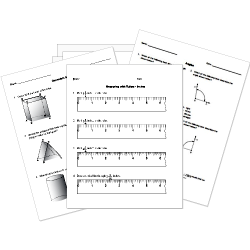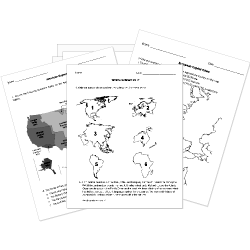Radio Waves in Television Broadcasting
Radio Waves in Television Broadcasting
This lesson aligns with NGSS PS4.C
Introduction
Television (Greek word, tele 'far', and Latin vision 'sight') is a mass medium used to transmit moving images and sound for communication like advertising, news, and sports in the 1920s. It was a crude TV available back then, but television transmission developed incredibly fast with time. The old-fashioned TV with roof antennas receives radio wave signals and is an example of terrestrial television that broadcasts video with sounds. John Logie Baird is often given credit for inventing television. In 1925, he successfully showcased the television system. However, many other pioneers, like Philo Farnsworth and Vladimir Zworykin, made significant television advancements. In this article, you will learn about how radio waves enable television broadcasting, and the difference between radio and TV transmission.
How Does Television Work with Radio waves?
Electromagnetic waves were first described in the 19th century by James Clerk Maxwell's equations. When combined, electric and magnetic fields oscillating perpendicular to one another make electromagnetic waves. A wide variety of frequencies, from long-wavelength radio waves to short-wavelength gamma rays, are included in the electromagnetic spectrum.
A television set receives and presents images and sounds with the help of some critical components: a camera, a transmitter, a receiver, an antenna, and a display screen. However, transmission depends on the signal the transmitter sends to the receiver. The signal is an electromagnetic wave in the spectrum of a radio wave.
Camera
A television camera is the first step in producing a television image. This camera converts light into electrical impulses using a photosensitive sensor, such as a complementary metal-oxide-semiconductor (CMOS) sensor or a charge-coupled device (CCD). When capturing an illuminated object, the camera's sensor records the amount of light at every point, resulting in a grid of microscopic image components or pixels.
Once a picture is taken, the camera transforms the pixel intensities into an electrical signal. After processing, this signal is modulated onto an electromagnetic wave, often a radio wave, to be transmitted to the television receiver.
Transmitter
The key to television transmission is modulation, which combines the electromagnetic wave with a specific radio frequency carrier wave. A signal, in the form of a radio wave, is modulated and travels through the air, carrying an encoded television signal to the receiver.
The TV video signal is AM (amplitude modulation), while the TV audio is FM (frequency modulation). These frequencies are used in old terrestrial televisions with roof antennae. However, advanced televisions with satellite dishes and cable transmission utilize significantly higher frequencies and rapidly evolve with the high-definition or HD format.
Receiver
The antenna captures modulated EM waves entering into it. A television set has a receiver that captures electrical signals from the antenna. The electronics of the receiver then process and amplify these currents. A single electron gun scans the image signal in a black and white TV. A color TV has three electron guns that display each pixel on the screen with red, green, and blue dots.
Antenna
The critical role of antennas is to collect electromagnetic waves successfully. Then, transform them into electrical signals that the television receiver can understand. Many antennas have been developed, ranging from the more conventional rooftop antennas to indoor and digital antennas.
Antennas are now more critical in digital television broadcasting. Compared to analog transmissions, digital signals offer higher-quality audio and visuals, But they are prone to interference. Thus, obtaining clear digital signals requires the correct antenna and perfect alignment.
Difference Between TV and Radio Broadcasting
From several applications of Electromagnetic waves, television is also one of them. Radio transmission does not require significant frequencies because it has to broadcast audio only, but in television broadcasting, audio, and visuals must be carried by the waves. For this purpose, essential frequencies of EM waves are required.
Specific bandwidth of frequencies is allocated to TV and radio broadcasting. TV channels operate frequencies of 54 to 88 MHz, called VHF (high frequency), and 174 to 222 MHz. However, the entire FM radio band lies between channels 88 MHz and 174 MHz.
Other channels called UHF (for ultra-high frequency) utilize an even higher frequency range of 470 to 1000 MHz.
Summary
- Television is a communication device that utilizes electromagnetic waves for transmitting and receiving images and sound.
- Electromagnetic waves are utilized in Television broadcasting, which are made up of oscillating electric and magnetic fields perpendicular to one another.
- Photosensitive sensors are used in television cameras to transform light into electrical impulses, which are then used to create pixel-based pictures.
- Amplitude modulation (AM) and frequency modulation (FM) are two types of modulation techniques used for the modulation of television signals onto electromagnetic waves (radio waves).
- TV receivers display images and produce sounds after demodulating the incoming signal and separating it from the carrier wave.
Related Worksheets:













